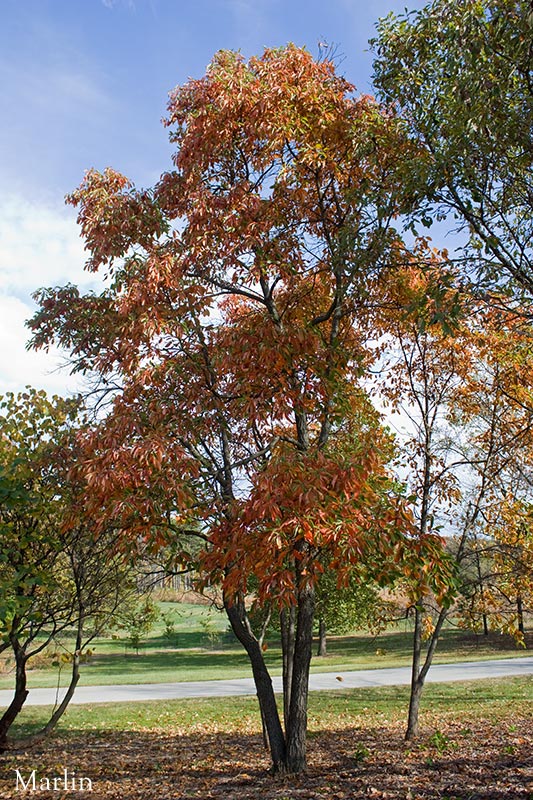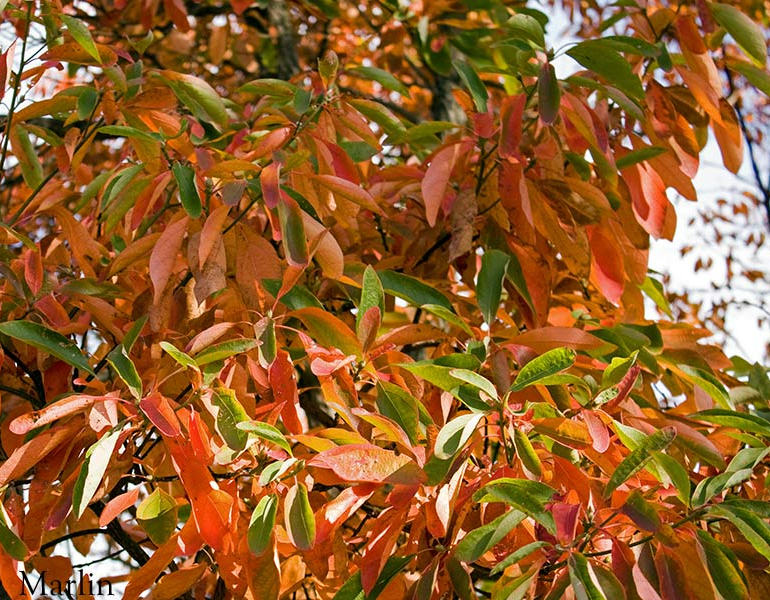Sassafras – Sassafras albidum
 Lauraceae: Laurel Family
Lauraceae: Laurel Family
Steam distillation of the dried root bark produces an essential oil, consisting mostly of safrole, that once was extensively used as a fragrance in perfumes and soaps, food and for aromatherapy [2].

The Laurel family is comprised of 2000 – 4000 species in 55 genera of flowering plants in the Order Laurales. Most are aromatic evergreen trees or shrubs, but Sassafras and one or two other genera are deciduous, and Cassytha is a genus of parasitic vines.
Members of this family are generally aromatic shrubs and trees with insignificant flowers and fleshy fruit. Some of the better known members of the family are the avocado, the camphor tree, cinnamon, sassafras, and Lindera (spicebush).
However, the “prime” member of this family is the Bay Laurel (Laurus nobilis), famous as the provider of bay leaves for cooking and the source of branches from which laurel wreaths were created, widely used in Greek and Roman times as crowns for victors.
The word “laureate,” as in Nobel or Poet was derived from this practice.
 Sassafras autumn foliage; Some individuals have three different leaflet shapes on the same plant
Sassafras autumn foliage; Some individuals have three different leaflet shapes on the same plant
In 1960, the FDA banned the use of sassafras oil and safrole in commercially mass produced foods and drugs based on the animal studies and human case reports. Several years later sassafras tea was banned, a ban that lasted until the passage of the Dietary Supplement Health and Education Act in 1994.
Sassafras root extracts which do not contain safrole are permissible, and are still widely used commercially in flavoring tea and root beer.References
- Sassafras – Sassafras albidum, Morton Arboretum acc. 534-81*1 photos: Bruce Marlin
- Wikipedia, The Free Encyclopedia, “Lauraceae“
- Wikipedia, The Free Encyclopedia, “Sassafras“
Family Rosaceae
Trees Index | Pine Family

